How to Plan a Trip to Great Smoky Mountains National Park
Let’s talk about how to plan a trip to Great Smoky Mountains National Park—it’s the most-visited national park in the country, full of wildlife and forests, and stuns visitors with impressive views of the weathered Smoky Mountains and plunging valleys riddled with waterfalls and historic buildings. This park straddles the border of Tennessee and North Carolina.
One of the true gems of this area of the country, the park is home to more than 187,000 acres of forest and more than 800 miles of hiking trails. Established in 1934, the more than 520,000 acres of the park as a whole protect a stunning amount of biodiversity, along with ample Appalachian and Native American history. It’s truly a hiker and wildlife-lover’s paradise!
As the only national park with free entry being the icing on the cake, it’s no wonder this is the most visited national park in America with more than 11 million yearly visitors. If you love wildlife, forests, and history, this is your sign to visit. The Smoky Mountains have tons of adventure waiting for you, and this guide on how to plan a trip to Great Smoky Mountains National Park will give you all the information you need to build the perfect trip itinerary.
Thinking about extending your trip to explore nearby Georgia? You can now get 15% off a Georgia State Parks Pass with my exclusive code AliceAdventures for all membership levels right here.
In the mountains of Tennessee and North Carolina, so many epic trails and vista views are waiting for you in the Smokies. While I’m showing you how to plan the perfect trip to this park, you might see affiliate links in the post. If you click and make a purchase, I may earn a small commission at no cost to you. Thanks for supporting my blog!
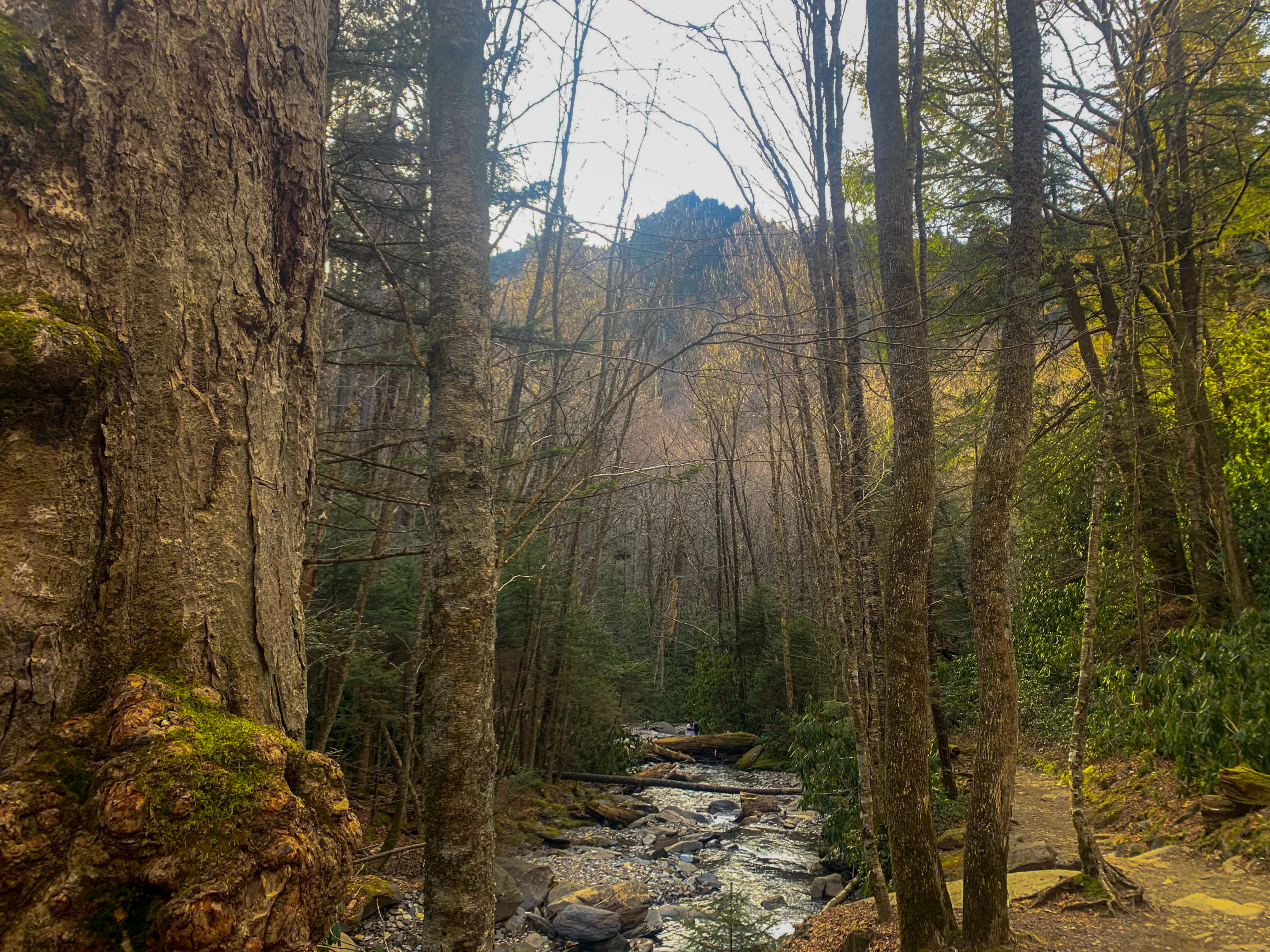
Great Smoky Mountains National Park Facts
- Established: 1934
- Size: 522,419 acres
- Entrance Fees: None
- Location: North Carolina & Tennessee
- Best Time to Visit: Spring and fall
- Visitors: 11 million+ annually
Next, check out details on how to plan a trip to great smoky mountains national park.
How to Get to Great Smoky Mountains National Park
Great Smoky Mountains National Park can be entered from several places.
From the south, Atlanta, Georgia is about 4 hours from the southern side of the park near Bryson City NC, while Gatlinburg, TN in the north sits right at the entrance to the park.
If you enter from the Tennessee side, the city of Gatlinburg does offer trolley service to the Sugarlands Visitor Center, the Laurel Falls parking area, and the Elkmont Campground from June through October. Note that the Cades Cove Loop Trail is closed to vehicles on Wednesdays in the summer months to give bicyclists more room, but bicycles are prohibited on all park trails, except the Gatlinburg Trail, the Oconaluftee River Trail, and the lower Deep Creek Trail.
For those traveling from the south, you will most likely enter the park in Cherokee, North Carolina, near the Ocanaluftee Visitors Center. It is worth noting that some of the best hiking and river exploring is in this southern section! Nearby, Bryson City and the small town of Deep Creek are great places to rent innertubes and fishing poles to spend a few hours on the river before or afer hiking to several waterfalls.
Even non-hikers can enjoy this area. An overnight trip to Bryson City, which is the starting point for the Great Smoky Mountain Railroad, gives you the chance to hop on the train and venture through the national forest by railcar. Imagine enjoying the rivers and forest breezes through open windows without the effort of hiking or walking. This is a great option for families with small children or those less able to get out on trails.
The Smoky Mountains can be entered from North Carolina or Tennessee. Since the park does not offer guided tours, the best way to explore the park is by vehicle, or by renting an RV. Check out my favorite RV rental place here: Adventures Made Simple - Rent an RV from RVshare .
Where Did the Name Great Smoky Mountains Come From?
The Cherokee referred to the mountains as ‘shaconage,’ which means ‘place of blue smoke,’ because the mountains themselves start to look like blue smoke in the distance as the layers stack away into the horizon. When you travel through the Great Smoky Mountains, you will notice the wispy fog that looks like plumes of smoke rising from the forest. This fog is caused by the vegetation exhaling volatile organic compounds—chemicals that have a high vapor pressure and easily form vapors at normal temperature and pressure.
Best Time to Visit Great Smoky Mountains National Park
Spring and fall are the best time to visit Great Smoky Mountains National Park overall. Both shoulder seasons offer mild weather and plenty of seasonal beauty, from wildflowers and forests greening out in the spring (but still chances for snow and ice at higher elevations) to fiery foliage and endless views in the fall.
Fall sees more visitors than spring as a barrage of people arrive in the park to leaf peep and take advantage of the mild temperatures with stunning scenic views. If you’re planning on visiting during fall, make sure to book campsite or hotel reservations well in advance!
The summer season is the busiest in the park overall, with average temperatures in the mid 80s. Since the park has a diverse topography with elevations ranging from 875 feet to more than 6,000 feet, temperatures can vary by up to 20 degrees from the base to the mountaintop. This makes it essential to pack layers and a rain jacket, no matter what time of year you visit.
Spring and summer can be very warm, while winters see temperatures into the mid-30s, as well as road closures on high-elevation roads like Newfound Gap Road due to snow. Winter is one of the best seasons to visit with fewer crowds, especially in the lesser-visited areas near Bryson City, NC and Townsend, TN.

Great Smoky Mountains National Park History
For thousands of years before Europeans ever came to America, the Smoky Mountains were home to the Tsalagi or Aniyvwiyai people—now known as the Cherokee. They mark their place of origin as a valley tucked between the river and the shrugging shoulders of hills outside Bryson City, NC, which is now home to their reservation.
During one of the darkest stains on American History, the Cherokee and most other Native American Indians were displaced from their homelands in the 1800s and sent on the Trail of Tears in 1838. It was a grueling, forced journey that sent most of the Cherokee tribe to reservations in Oklahoma and Arkansas. The few remaining Cherokee gathered in what became the town of Cherokee, North Carolina, at what is now the southern entrance of the park. You can visit Cherokee today and learn about Native American history at the Oconaluftee Indian Village and visitor center.
After the Trail of Tears, the Smoky Mountains were home to hundreds of settlers that lived throughout the Appalachain mountains. These families farmed and milled in its hidden valleys. The woods today still hold many memories of the early history of the park. Walk through the woods and you may see old millstones, mossy lines of old stone walls, and long-lived in cabins, mills, and barns from the late 1800s.
Today, more than 90 historic buildings remain in the park. The greatest variety are in the Cades Cove area on the Tennessee side, but you can also tour a Mountain Farm Museum at the Ocanaluftee Visitors Center in Cherokee or the nearby Mingus Mill.
In the early 1930s, the residents of the Smoky Mountains worked in partnership with the state governments to hand over 6,600 tracts of private land and matched donations, which helped officially create Great Smoky Mountains National Park in 1934.
Best Areas to Visit in Great Smoky Mountains National Park
Great Smoky Mountains National Park is absolutely huge and let’s start by managing expectations: you will not be able to see it all in a day. The park can be broken up into 4 general areas. Here are the ones you won’t want to miss!
Newfound Gap Road
This road runs north and south from North Carolina to Tennessee. It is the main road for most visitors to the park and will give you a great overview of the park with tons of scenic overlooks and historic markers along the way.
Make sure you stop for a walk through the recreated Appalachian Homestead at the Oconaluftee Visitors Center near Cherokee, NC. This is also a great place to see the park’s elk, who often come to the large fields outside the visitors center. Continue north as you drive along the river, stopping at some of the many viewpoints as you gain in elevation. Near the highest point of the park, there is a great viewpoint where you can stop for a view of the park.
Hang a left just before this parking lot to drive up to Clingmans Dome, now called Kuwohi. Clingmans Dome is the highest point in the park, accessible in the summer by a short 1 mile hike that takes you to a unique lookout tower. Hiking to Clingmans Dome is a must-do activity that I always recommend when someone asks how to plan a trip to Great Smoky Mountains National Park! Winter travelers will have to park at the end of the road and walk 7 miles each way to reach Clingmans Dome.
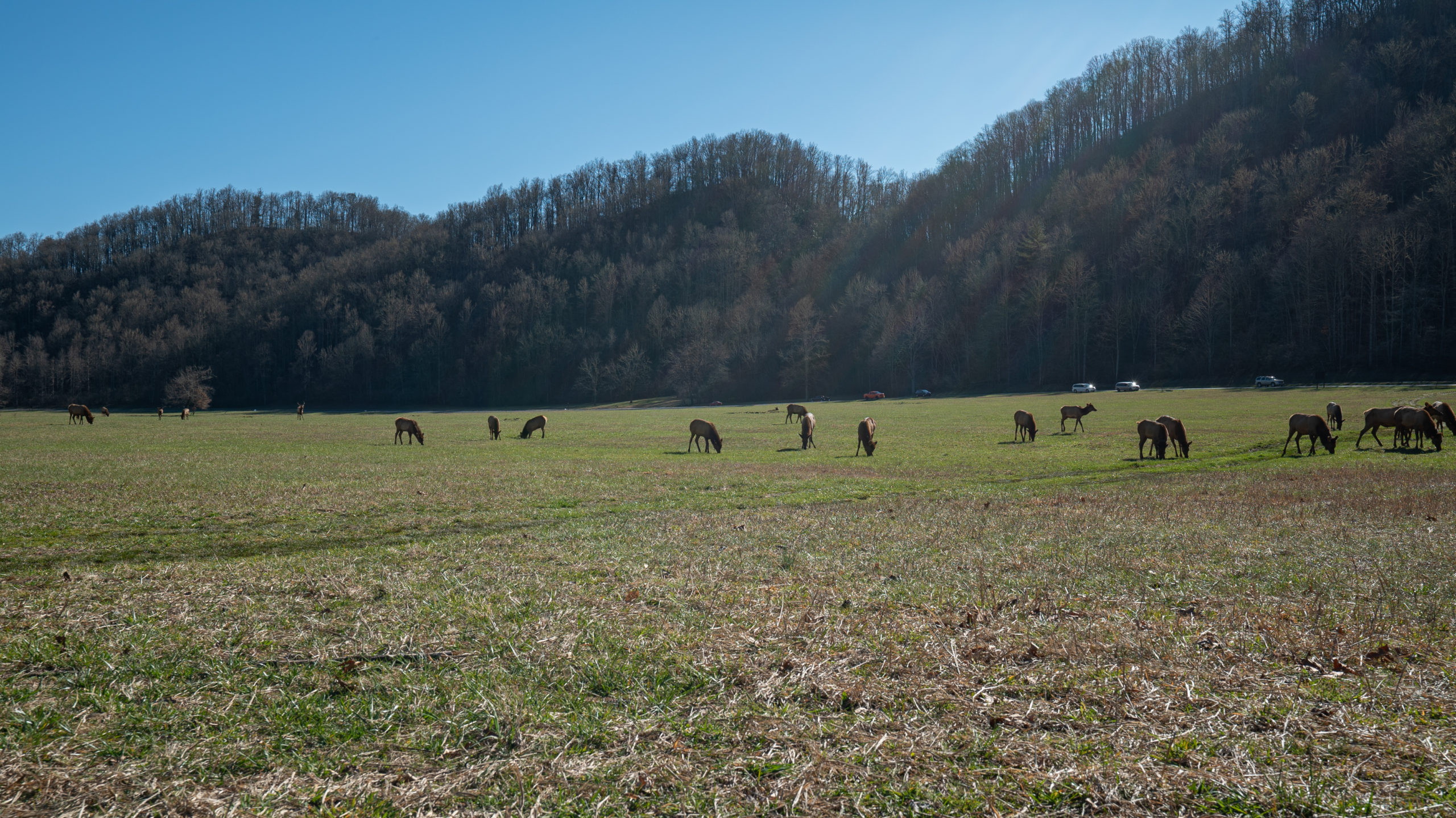

Cades Cove
Cades Cove is one of the most popular areas in the Great Smoky Mountains National Park. It is made up of a broad, verdant valley surrounded by mountains, and showcases some of the best historical sites in the park as well. It offers some of the best opportunities for wildlife viewing in the park with deer, black bear, coyote and turkey often roaming around.
To explore the area by vehicle, travel on the 11-mile one-way Cades Cove Loop Road which circles the cove. This usually takes between 2 and 4 hours, with numerous trails to walk on along the way. Learn the history of the park at the Cades Cove Visitor Center and explore the historic gristmill and Cable Mill. Closer to Gatlinburg, you can stop by Sugarlands Visitor Center to see wildlife exhibits, view a film on the park, and pick up unique souvenirs at the gift shop.
Another great way to explore Cades Cove is by bicycle. You can rent bikes at the Cades Cove Campground to ride the loop any day, but on Wednesdays and Saturday mornings, it is closed to vehicle traffic and ideal for biking. You also won’t want to miss the Cades Cove Nature Trail or the 5-mile hike to Abrams Fallsin this area.


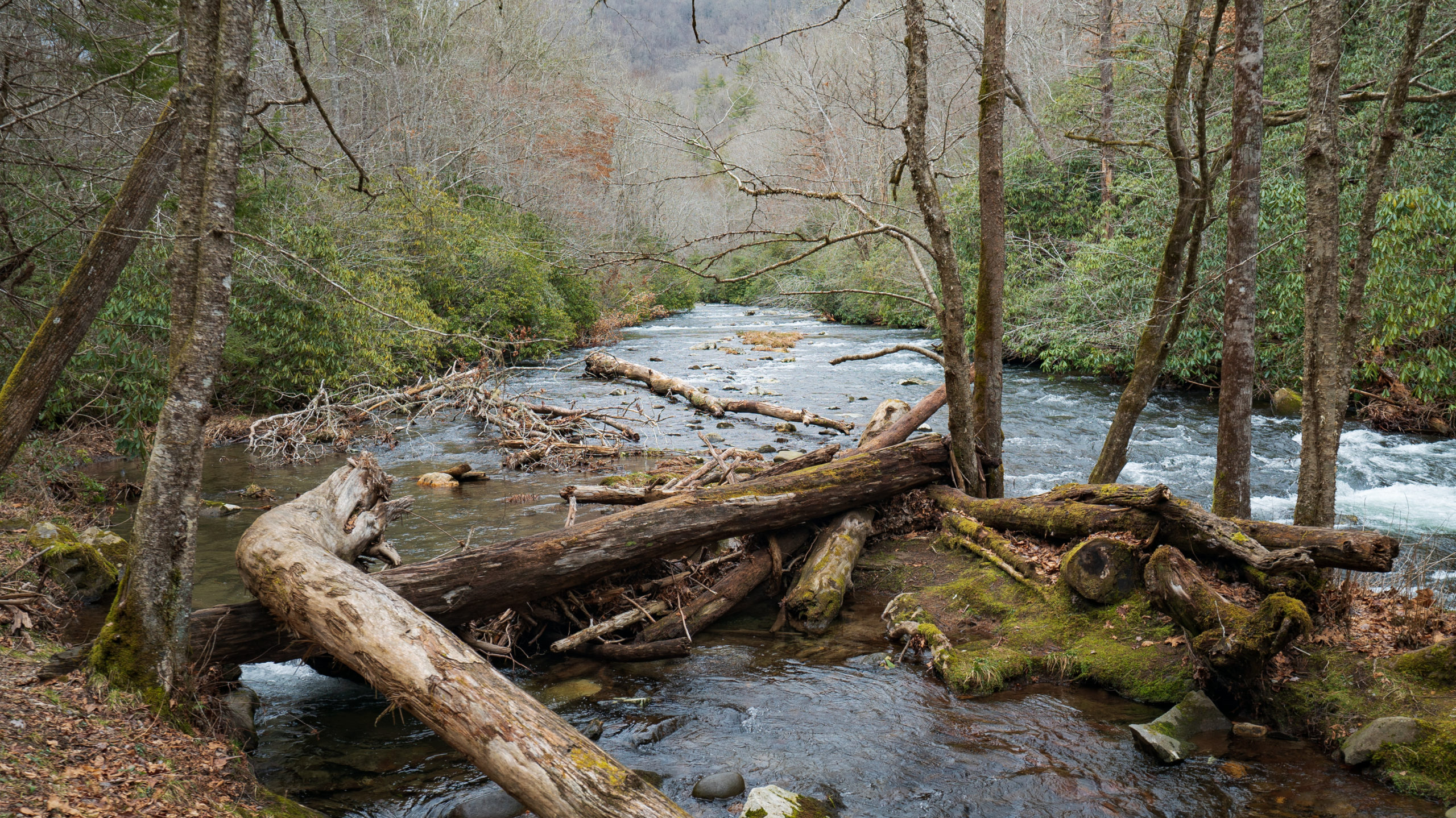
Bryson City/Deep Creek
Located on the southern side of the park, Bryson City, North Carolina is the gateway to the park for those traveling from the south. Bryson City is a great small town with plenty of hotel and restaurant options. It is also home to the Smoky Mountain Railroad. The roailroad is a great option for those wanting to sit and relax while taking in views of the forest through large open windows.
Bryson City is also the home of Deep Creek. This area is insanely popular in the summertime, but less crowded in winter, spring, and fall. With its location along Deep Creek, lots of people rent inner tubes from one of several outfitters near the river and spend the day floating down the river. Other adventurers can enjoy long hikes and walks along the river, fish for trout, or just enjoy the beautiful forest.
Roaring Fork Motor Trail
Located right outside Gatlinburg, the Roaring Fork Motor Trail is a paved road that leads from Gatlinburg into the northeastern section of the park. The loop road itself is just over 5.5 miles each way and takes you to see some old homesteads and historic buildings, rushing streams, old growth forests, and some great trailheads if you’re into hiking.
Much of the road is closed in winter, so plan accordingly if you are visiting in the off-season. You won’t want to miss hiking to Rainbow Falls or taking the guided walk to the Noah “Bud” Ogle farmstead.
Best Hikes in Great Smoky Mountains National Park
The Great Smokies have more than 800 miles of hiking trails and more than 2,000 miles of rivers and streams. It is an amazing place to hike in any season. With more than 100 waterfalls, several towering mountains, and varied landscapes all over, there is a hike for every type of outdoor adventurer. A.T. fanatics will also love that 70 miles of the Appalachian Trail run right through the park!
Great hikes can be found on both AllTrails and the National Park website, but here are a few really special hikes in the park you won’t want to miss.
- Alum Cave Trail to Mt. Le Conte: This trail is 10.5 miles and begins about 20 miles from Gatlinburg on the north side of the park. The challenging climb is also super popular, beginning near the river and climbing steadily in elevation. Many hikers will choose just to hike to Alum Cave (shown above), which is at mile 2.5. After Alum Cave, the trail climbs higher into mountains before reaching the Le Conte Lodge and the summit of Mt. Le Conte, the third-highest peak in the park.
- Rainbow Falls Trail: This trail is 5.5 miles in length. Located on the Roaring Fork Motor Trail outside Gatlinburg, it takes you to the beautiful Rainbow Falls. This hike is rated as difficult as almost immediately you will start an ascent that does not let up. This trail also connects with the summit of Mt. Le Conte and makes a great overnight trip.
- Abrams Falls: Abrams Falls is a 4.9-mile hike near Townsend, Tennessee. It is one of the most beautiful waterfalls in the park and is a must-do for visitors to this area of the park.
- Deep Creek to Indian Falls: The Deep Creek Trail is 4.9 miles long with options for several longer and shorter versions. It starts outside the town of Bryson City, along Deep Creek, where many summer travelers will be entering the river for inner tubing. The trail is a gentle, meandering path with not much elevation that follows the river and takes you to two waterfalls.
- Clingmans Dome: To reach the famous observation tower—the tallest point in the Smoky Mountains—you will walk 1.2 miles from the Clingmans Dome Road. From the top, you will have 360 degree views of the Smokies and can sometimes see as far as 100 miles. The road is closed from December to March, but the Dome is accessible year round for those wanting a long walk in the winter.
- Chimney Tops: One of the most popular hikes on the Newfound Gap Road, this 3.6-mile, heavily trafficked trail takes you along the river and up a steep ascent to a beautiful mountain summit. Recent reports in 2020 have labeled the last part of this trail closed due to fire damage.
- Grotto Falls Trail: This is a popular 2.6-mile trail near Gatlinburg, great for families and non-hikers that takes you to a small waterfall.
- Laurel Falls: This mostly-paved trail is just 2.4 miles long and is accessible to all. Areas of the trail can be difficult for strollers in some areas. The trail has a slight incline and takes you to the beautiful Laurel Falls, also near Gatlinburg.
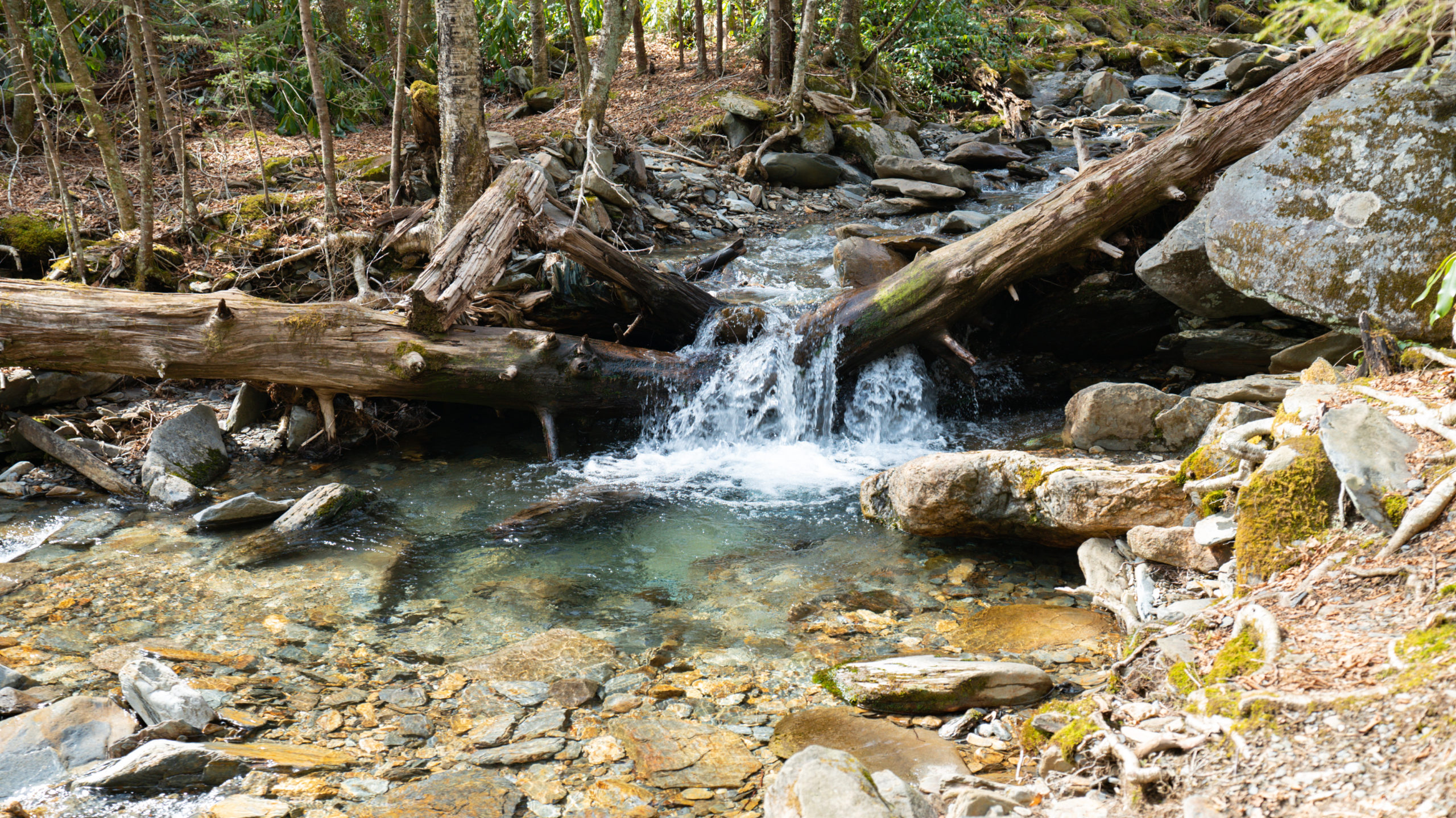

Where to Stay in Great Smoky Mountains National Park
If you are traveling by RV or planning to camp, there are a plethora of camping areas within and outside the park. Take a look at this RV and camping guide for recommendations within the park to find the best sites.
There are no hotels in the park, which means most non-campers will stay in one of the several towns surrounding the park. I’ll highlight the best options below.
Southern Entrance Accommodations
- Bryson City, North Carolina: Bryson City is on the southern end of the park, home to the Smoky Mountain Railroad, it is a small town that offers great food and drink. A small selection of hotels and motels are available. I loved staying at the Abrams Inn, and highly recommend it.
- Cherokee, North Carolina: Cherokee is the home of the Cherokee tribe, the original inhabitants of the national park. Cherokee is the official entrance to the south side of the park. Here you will find the Oconaluftee Visitors Center and a decent selection of gift shops, restaurants and cafes. There is also a Harrah’s Casino and a decent selection of Motels as well.
Northern Entrance Accommodations
- Gatlinburg, Tennessee: Gatlinburg is located at the edge of the northern side of the park. The city is like an amusement park with all kinds of entertainment, arcades, rides and fun for all ages. There are lots of hotels to choose from for all budget ranges. For those looking for a quieter option, a mountain vacation rental is one of the best options in the area. Distance to Sugarlands Visitor Center: 3 miles
- Pigeon Forge, Tennessee: Pigeon Forge is home to Dollywood, located about 20 minutes from the entrance to park. It has a large offering of great hotels and vacation rentals. There are lots of restaurants and entertainment for families with children. Distance to Sugarlands Visitors Center: 20 miles
- Townsend, Tennessee: Townsend is a beautiful area of Tennessee and the place to stay for visitors interested in exploring Cades Cove. The area has some great cabins, mountain resorts and RV parks for accomodations. Distance to Cades Cove 16 miles
All Set on How to Plan a Trip to Great Smoky Mountains National Park?
We’ve explored how to plan a trip to Great Smoky Mountains National Park, from figuring out the best time of year to visit to determining which hikes to add to your itinerary and where to stay to be close to your favorite spots in the park. If you’re still up for more exploring, I list this park as one to start with on a Coast to Coast National Park Road Trip—read that next!
I’m so glad you’ve stopped by to learn more about how to plan a trip to Great Smoky Mountains National Park. I’ve visited several times and try to explore new areas of the park, stay in a different place, and hike new trails each time I go to get a broader sense of what makes this national park so special. What’s your favorite part of GSMNP? Let me know in the comments!

Pin Me



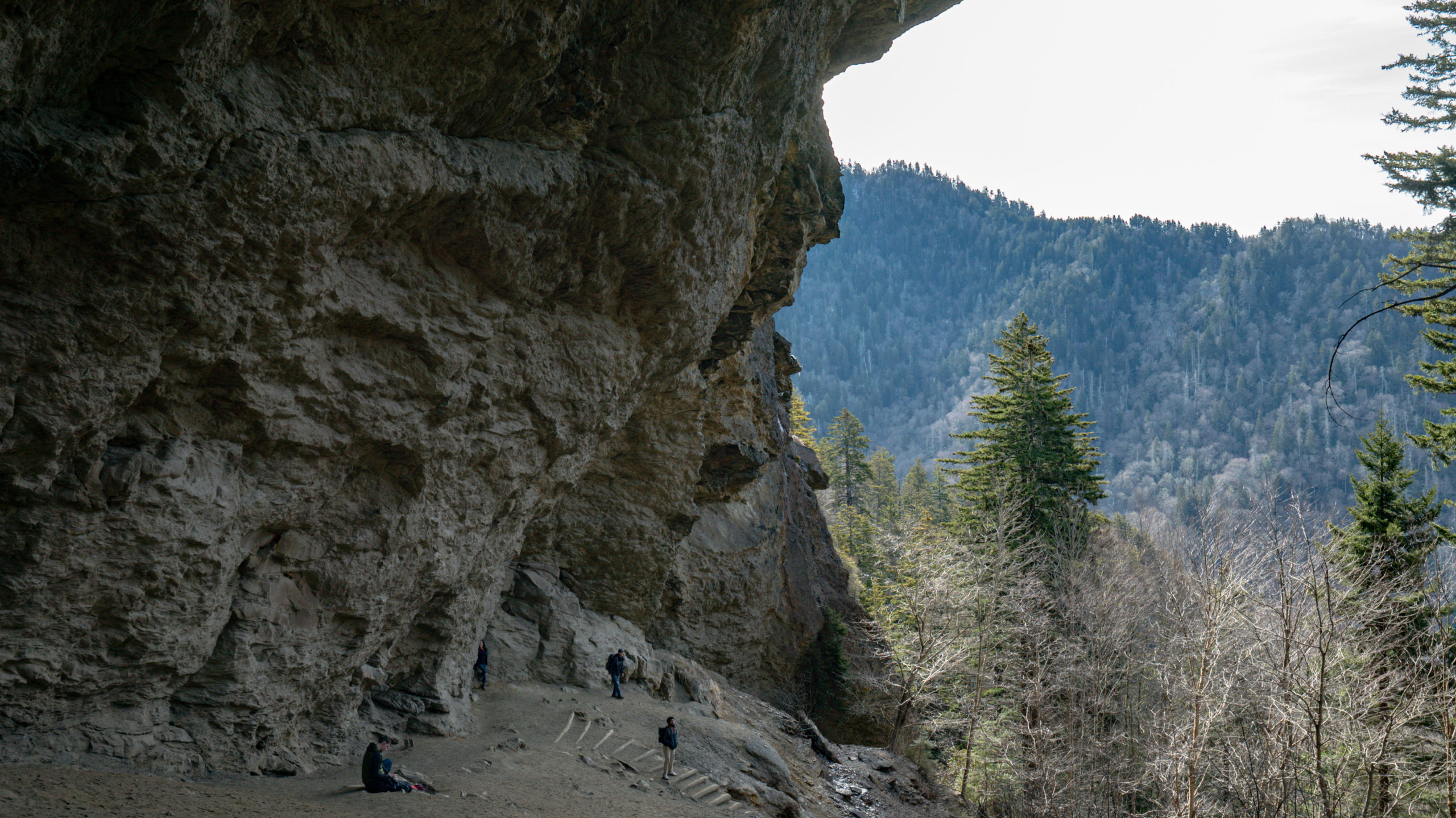
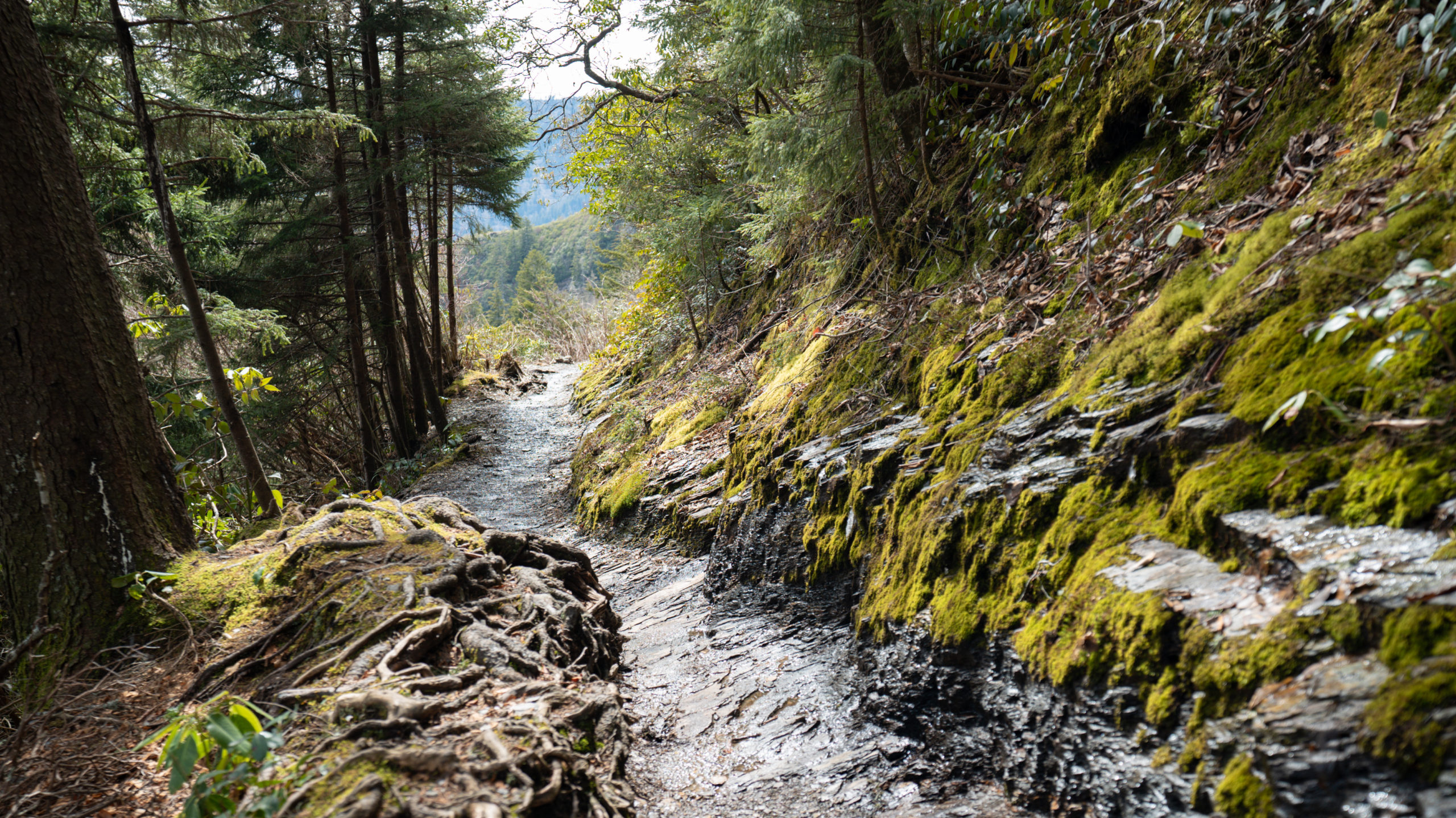





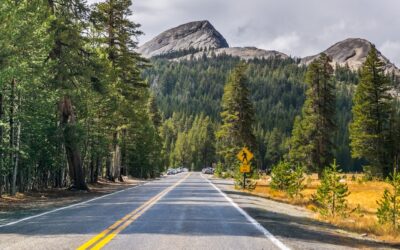








I’ve been reading about so many great national parks in the US lately and this one is no exception. It looks like a fantastic place to visit and get back to nature. Awesome photos, too!
The Great Smoky Mountain Park has a great system of trails. It would be amazing to explore in the Fall! I’ve love to see those elk!
It’s been YEARS since I visited the Great Smokies. I remember the old historic houses/cabins though! I would love to go back and do some of the hikes you did. We just didn’t have enough time there.
I haven’t been to the US yet but I have heard of Smoky Mountains National Park. Being an avid hiker, this seems like an amazing place to visit. My friends living in Tennessee have been suggesting this place. They say it is a great place to visit with RV. Thanks for posting this guide.
I just watched your video and that bear in the tree was amazing. I can’t believe how well their balance is and was so afraid one of those branches were going to snap! I have yet to visit the Smoky Mountains and would love to visit someday when I finish exploring the National Parks on the West Coast.
Unbelievable isn’t it? FOr being so large, they really are little acrobats.
This national park is a hiker’s dream, I’d love to spend time here. Some excellent tips for visiting here so I’m bookmarking for if I visit on our next US road trip.